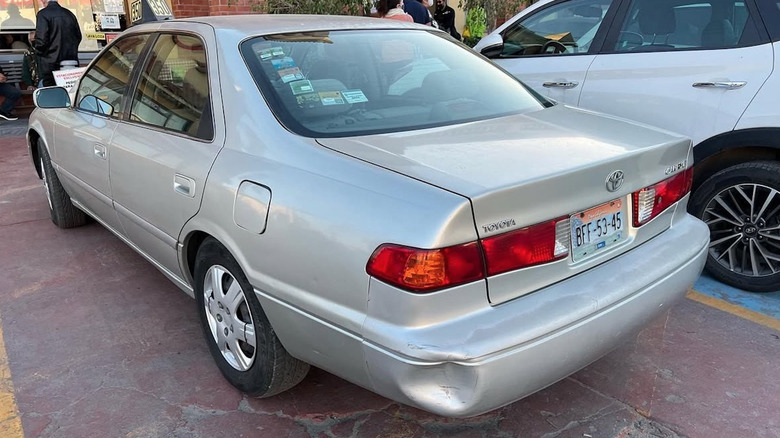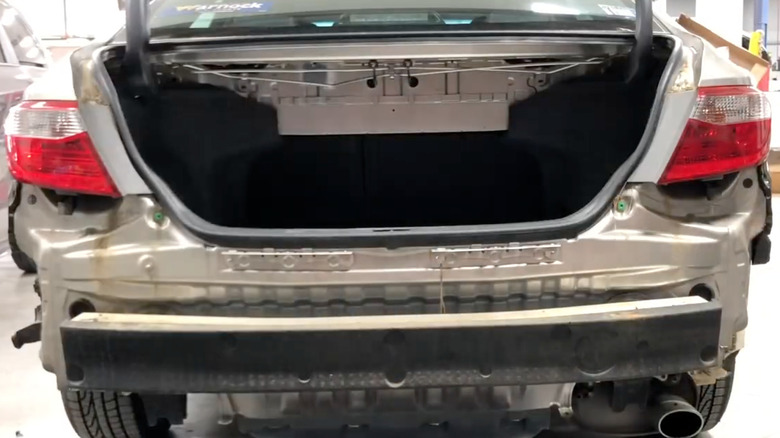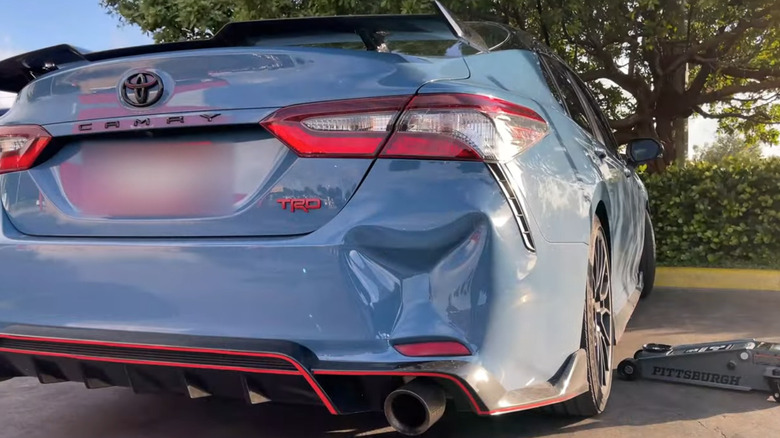The Toyota Camry Dent: What Is The Phenomenon & How Did It Gain Such Notoriety?
If you've ever encountered a Toyota Camry (and, being one of the most successful Toyota models, you almost certainly have), you've probably seen a Camry Dent or two. To the untrained eye, the car looks like any other mid-size sedan: pretty unremarkable. But once you notice the infamous Camry Dent on the rear bumper, you'll start to see it everywhere.
The term refers to a distinct, basketball-sized dent that shows up on one or both rear corners of Toyota Camry bumpers. Though it didn't become a meme until jokes started appearing on the internet in the early 2010s, this oddly specific body damage almost surely dates back to the vehicle's rise in popularity in the mid-1990s. That's when wide-body Camry models like the XV20, XV30, and XV50 first started hitting the road.
It's obvious that the cause of the Camry Dent leans more "user error" than "manufacturing defect," but nevertheless: Online communities like the Toyota Camry Dent Club on Facebook or r/camrydents on Reddit have even taken to documenting cases, sharing theories, and conducting amateur research (including tracking dent frequency by paint color). This has given it quite the reputation, to say the least.
An actual flaw or a tongue-in-cheek meme?
Adding more evidence to the "user error" explanation is the fact that Toyota has no official explanation for the Camry Dent. Across the internet, the most popular line of thinking is that Camry drivers are less likely to avoid minor fender scrapes or pay for cosmetic repairs. In turn, this leads to a ton of unaddressed bumper damage out on the road.
Other so-called theories are much more conspiratorial: Toyota's doing it on purpose to make more money on repairs, to sell more cars, or, conversely, to make people stop buying the Camry altogether. None of it's based in fact, and most of it veers into satire territory. Whether viewed as an inside joke or a cautionary tale about the flaws of mass-market vehicle design, the Camry Dent has certainly earned its meme status.
From a mechanical standpoint, there's no evidence that would suggest that Camry bumpers are structurally weaker or more accident-prone than any other sedan from a popular manufacturer (like Honda, Nissan, or other reliable car brands). Besides, bumpers are supposed to have a certain degree of flexibility to absorb impact — typically with a combination of a rigid steel base, a foam energy absorber, and a plastic outer shell. That plastic shell is the part that's denting.
What does it cost to fix a Camry Dent?
Still, not everyone wants to embrace the dent. For those looking to fix the issue, a full professional repair could run anywhere between $500 and $1,200, depending on the severity. (Unless you want to try some DIY dent removal.) If the Camry Dent came from an accident, insurance might help bring that cost down. Even then, some might prefer to leave the cosmetic damage alone and avoid the cost of the deductible or any potential increase in insurance premiums.
In the end, the Camry Dent is everywhere because the Camry itself is everywhere. It's a vehicle that lasts, and as long as Toyota keeps using the same basic materials for the bumper year after year, it's just going to continue to cave in. For better or worse, the Camry Dent is here to stay. And, with millions of these sedans out there on the road today, owners might as well wear it as a badge of honor.


